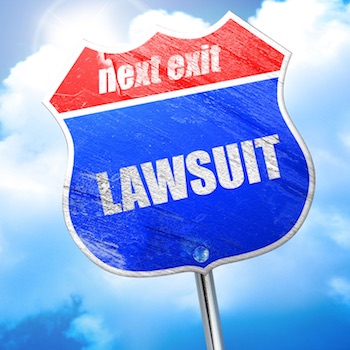Sued: What In-house Counsel Without Litigation Experience Need to Know – Preparing Your Inside Team | Wolf, Greenfield & Sacks, P.C.
3: Preparing Your Inside Team
Preservation, Privilege, Potential Pitfalls
This is the third in a series of articles that explores considerations and suggested actions for in-house counsel who are inexperienced in patent litigation, yet facing a suit. The first article included considerations to help understand some parameters of the suit, and the second article included considerations to help select your lead counsel.
This article focuses on preservation obligations and privilege considerations that are related to the discovery phase of a lawsuit. The discovery process – which includes interrogatories, requests for documents and admissions, and depositions – represents the phase in a litigation during which the parties exchange information that can form the evidence presented at trial. Preservation ensures that documents and other relevant material are retained to facilitate subsequent discovery, while privilege can limit what must be provided during discovery. The obligation to preserve arises from the suit, but the establishment and maintenance of privilege requires consideration long before any litigation is filed or even anticipated.
Preservation
Federal common law and the Federal Rules of Civil Procedure impose a duty to preserve evidence that may be relevant to litigation. This duty is triggered by a reasonable anticipation of litigation. The scope of the duty (i.e., what is relevant and, thus, subject to preservation) and the qualifying triggering event (i.e., when should you have reasonably anticipated litigation) can vary from case to case and be subject to dispute. While plaintiffs will sometimes include statements in complaints or separate correspondence reminding defendants of the duty and purporting to define its scope, such statements are not determinative.
When to preserve
Service of the complaint certainly provides an undeniable notice of the duty to preserve evidence, but other activity, if it occurs, can act as an earlier trigger to the duty. This activity can include receipt of a demand letter or other communication from the plaintiff alleging or suggesting infringement of their patent(s) and knowledge of the complaint prior to service.
What to preserve
The documents (both paper and electronic) and things (e.g., physical products or source code) subject to the duty to preserve evidence are defined by the substance of the suit and the potential scope of discovery. The duty therefore extends to any documents and things potentially relevant to the plaintiff’s claims and the defendant’s anticipated defenses. For example, if a complaint accuses a set of products based on a particular patent claim, the duty to preserve would normally extend to documents and things related to the design and manufacturing of the product, as well as to marketing efforts and information related to sales.
Delineating which documents/software/products are relevant is not always straight-forward. Prudence dictates preservation in those cases. While preserving material still allows a later determination (e.g., during document review) of whether to provide it during discovery, the consequence of a finding of spoliation — that is, failure to preserve relevant evidence – can be severe.
If the plaintiff succeeds in persuading the judge that relevant material was destroyed or otherwise made unavailable, the judge may impose sanctions commensurate with the degree of culpability found for your organization. For example, the judge may instruct a jury on an adverse evidentiary inference, which allows the jury to infer that the destroyed material was negative for your organization’s position. In an extreme case, the judge may enter a default judgement for the other side.
An approach to compliance
Given the potential consequences of failing to comply with the preservation duty, putting a clear and effective policy in place promptly can be critical. Everyone who potentially has relevant documents or things should be notified. Further, normal auto-delete or other housekeeping procedures that may result in destruction should be suspended.
To preclude or mitigate an allegation of spoliation, your organization’s preservation efforts should not only be compliant but also demonstrable. While many large organizations or those accustomed to litigation may have a template to work from, you may rely on your outside counsel to generate a hold notice for circulation within your organization. Your litigation team should be able to determine the content and recipients of the hold notice.
Immunity from discovery
Material subject to attorney-client privilege or litigation work-product protection can be withheld during discovery assuming that the privilege or protection has not been waived. Generally, withheld material is identified in a privilege log with information to allow an assessment of whether privilege or other protection attaches or could be challenged. Even privileged or protected material must be preserved, at least to allow preparation of the log, and potentially to ensure that an unfavorable finding on the claimed privilege or protection does not lead to a finding of spoliation.
Attorney-client privilege
Unlike the duty of preservation, which arises from anticipation or knowledge of litigation, privilege is an on-going consideration throughout your tenure as in-house counsel.
Attorney-client privilege is recognized under federal common law based on four elements: (i) a communication (ii) between counsel and client (iii) in confidence (iv) for the purpose of seeking, obtaining, or providing legal assistance to the client. The purpose of attorney-client privilege is to facilitate such assistance.
Not only must all four elements be met to establish privilege, but the elements must also be maintained to keep the privilege. A typical example of waiving an established privilege involves one of the parties providing privileged communication to a third party not necessary for the provision of the advice. For example, if your CEO shares your communication with a potential investor, an opponent in litigation could have a strong argument that privilege has been waived by failing to maintain element (iii).
The elements for establishing attorney-client privilege are no different for in-house than for outside counsel. In both instances, it is important to keep in mind that organizations cannot shield documents from discovery by copying an attorney – whether in-house or outside counsel – to communications that do not actually concern legal advice.
Yet, there can also be some differences and pitfalls to establishing privilege in the in-house context because the purpose of your communication (element (iv)) can be more susceptible to challenge. This is especially true if your role extends into business discussions and decisions that are not closely tied to legal issues. Depending on the nature and purpose of a particular email or document, it can be worthwhile for you to limit the content and consider the framing to ensure that the communication cannot reasonably be seen as being for a business purpose rather than for legal counsel.
The role of non-lawyers in your organization should also be considered from the perspective of privilege. For example, a development team within your organization may become aware of a competitor’s product or patent. It can be helpful if you conduct training so that the team in that scenario is aware that emails amongst themselves discussing potential infringement by your organization are not protected and can become problematic in a subsequent litigation.
Litigation work product
Unlike attorney-client privilege, litigation work-product protection can extend to the work product (e.g., reports, memoranda, notations, not necessarily communication) of non-lawyers, so long as the material was prepared for an attorney in preparation for litigation. The purpose of the work-product doctrine is to maintain the integrity of the adversarial litigation process. Accordingly, it does not apply in transactional or other non-adversarial contexts. Thus, while outlines of questions to ask opposing witnesses at deposition are an example of protected work product, typical patent prosecution activities are not subject to the protection. It bears noting that, subject to the factors discussed above, attorney-client privilege does attach to certain prosecution activities.
Litigation work-product protection can attach even before litigation is actively pending, although in such circumstances the exact contours are particularly case-specific and potentially subject to challenge. Returning to the example of the development team that becomes aware of a product or patent, their communications amongst themselves are not privileged, but documents generated by them may or may not be protected under the work-product doctrine depending on the circumstances.
On the one hand, if your organization received a demand letter from the competitor or the competitor filed a complaint, and you asked the team to create particular documents because of or for use in potential litigation, the documents are likely protected. On the other hand, if the team generated notes when they became aware of the product or patent, with nothing more, those notes are unlikely to be protected. Separately, the mere act of providing a preexisting document in response to a request from counsel does not make that document itself either privileged or subject to work-product protection.
Communication from you setting out the litigation-based purpose for creating a particular document can be helpful in bringing that document under the work-product protection doctrine. However, a potential pitfall of such a communication is the lack of a corresponding hold notice, because the same “anticipation of litigation” that implicates work-product protection can also potentially trigger the obligation of preservation.
Differences between attorney-client privilege and work-product immunity
If attorney-client privilege applies and has not been waived, it immunizes the privileged document from discovery except in the rare case of the “crime-fraud exception,” which is even more rare in the context of patent litigation. By contrast, work-product immunity is less absolute. In certain instances involving factually-focused work product, an opponent in litigation may be able to obtain access by establishing a substantial need and an inability to obtain equivalent information by other means. However, a showing of substantial need cannot be applied to the protection of opinion work product but, instead, only to fact work product. For example, if you interview a witness regarding a potential prior art product and the witness later passes away or otherwise becomes unavailable, an opponent in litigation may be able to obtain copies of your notes concerning factual aspects of what the witness told you. However, you would be able to redact any notes related to the legal implications of those facts.
Like attorney-client privilege, work-product protection can be waived. However, the applicable standards are different – making it harder for adversaries to establish that work-product protection has been waived. The key question in the case of work-product waiver is simply whether the organization took reasonable steps – for example suitable confidentiality agreements – to prevent the documents in question from falling into the hands of an adversary in litigation. For example, returning to the above example of your CEO sharing a document with a potential investor, such sharing normally would not waive work-product protection (assuming it exists in the first place) provided that the third party executes a suitable non-disclosure agreement.






